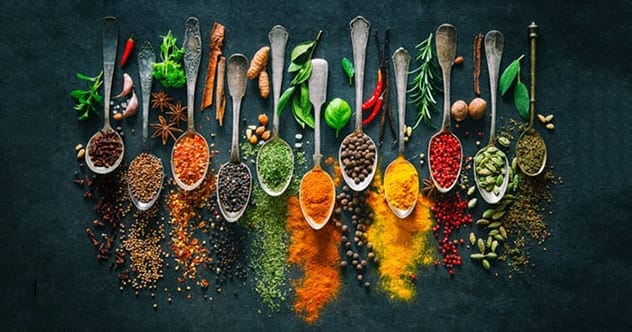We all reach for spices to add a kick to our meals, right? Cinnamon in our apple pie, turmeric in our curry, chili in our… well, almost everything spicy! Spices are the heart of cuisines worldwide, instantly telling us where a dish might hail from. But what if I told you these aromatic treasures have lives far beyond the kitchen cabinet? Throughout history, spices were more than just flavor enhancers; they were valuable commodities, shaping trade, starting wars, and even acting as currency. Their impact on civilization is immense, influencing not just our food, but how we lived, healed, and even preserved our past. Let’s dive into 10 truly bizarre and fascinating ways spices have been used that have nothing to do with cooking.
1. Mummification & Embalming with Spices
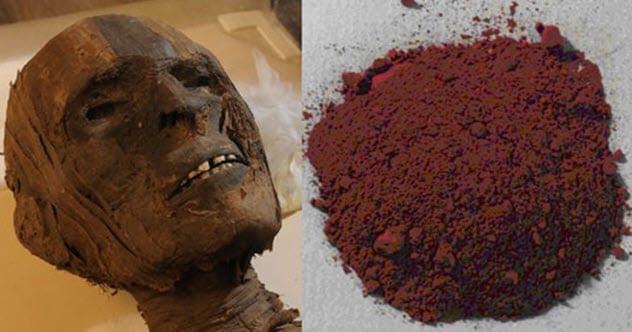
It might sound like something from an ancient ritual, but the ancient Egyptians were masters of mummification, and believe it or not, spices played a crucial part. To preserve bodies for the aferlife, they didn’t just rely on wrappings; a special blend of spices was essential. After the delicate process of removing internal organs, the body was thoroughly cleansed using this aromatic concoction.
Myrrh was a star player, prized for its potent insect-repelling properties, protecting both the body and its immediate surroundings. Cinnamon, in its oil form, contributed its anti-fungal, antiviral, and antibacterial strengths. Cumin, another powerful antibacterial spice, worked alongside anise oil, known for its antiseptic and antimicrobial effects. This powerful team of spices helped halt decay, keeping the deceased astonishingly well-preserved for millennia.
2. Spicing Up Your Drinks: Alcoholic Infusions

Think spices are just for food? Think again! Many of our favorite alcoholic beverages owe their unique character to a careful selection of spices. Gin, for example, is a highly aromatic spirit where each distillery crafts its signature taste using a distinct mix of “botanicals.” Common spice additions include coriander, cardamom, anise, black pepper, cinnamon, and even saffron. Seasoned gin drinkers can often identify a distillery just by recognizing the dominant spice notes.
Spiced Rum is another popular example, and you can even try making your own at home! Simply infuse regular rum with warming spices like vanilla, cinnamon sticks, allspice berries, cloves, peppercorns, nutmeg, and ginger. And let’s not forget liqueurs such as Crème de Menthe, Campari, Fernet, and Jägermeister – all of which rely on spices to achieve their distinctive and memorable flavors.
3. Sweet Dreams: Spices for Insomnia Relief
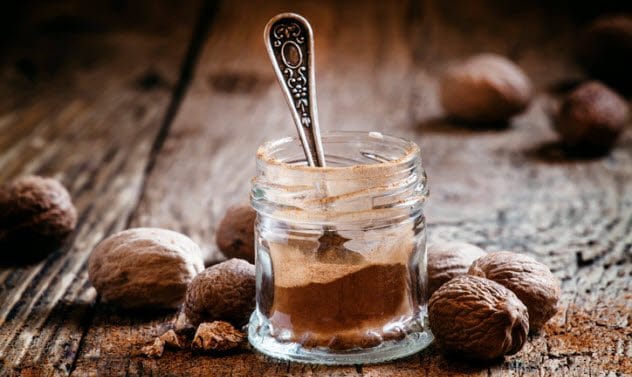
If you’re tossing and turning at night, your spice rack might hold a gentle solution. Nutmeg and cinnamon have long been explored for their calming effects and ability to promote sleep. While scientific proof for many natural remedies can be elusive, enthusiasts of traditional medicine often praise nutmeg for its soothing qualities, believing it helps you drift off to sleep and stay asleep.
A word of caution with nutmeg, though: too much can lead to unpleasant side effects, including hallucinations. There’s even a condition known as “Nutmeg psychosis,” marked by agitation. If insomnia is a concern and you’re wary of nutmeg, cinnamon offers a safer alternative to explore for a peaceful night’s rest.
4. Ancient Aromas: Spices in Botanical Colognes

Long before daily showers and modern soaps became the norm, people relied on potent perfumes and colognes to mask body odors. Can you imagine how strong these fragrances needed to be? Some of these early perfumes were even considered “medicinal,” believed to fight off “bad air” thought to spread illness. In times when hygiene standards were vastly different, unpleasant smells were often linked to disease, making perfume a tool for perceived protection.
Spices like nutmeg, pepper, cinnamon, cloves, and myrrh were commonly infused into alcohol in these ancient perfume-making practices. Their strong, lasting scents, often blended with herbs and flowers, were fundamental in the evolution of the sophisticated fragrances we enjoy today.
5. Fresh & Fragrant: DIY Spice Scent Sachets

Want a natural way to freshen your laundry without harsh chemicals? Try making your own scent sachets using spices! While they won’t replace your fabric softener, they’re great for adding a lovely, subtle fragrance to your freshly washed clothes. You can also tuck them into drawers or hang them in your closet to keep everything smelling clean and earthy.
Making one is super easy: take a small cloth pouch and fill it with whole (not ground) cloves, cinnamon sticks, or pieces of nutmeg. Mix them with dried lavender, rose petals, or your favorite dried flowers. Toss the sachet into the dryer with your clothes, and enjoy the natural aroma! Depending on the spices you choose, these sachets might also help prevent bacteria buildup due to their antimicrobial properties.
6. Nature’s Remedy: Spices in Herbal Tinctures
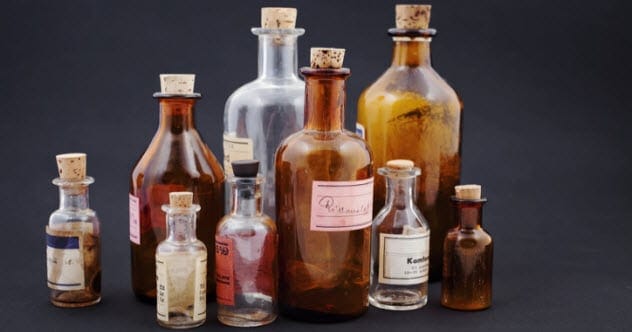
Herbal tinctures are highly concentrated liquid extracts of herbs or spices. They are typically made by soaking plant parts in alcohol or vinegar for several weeks, drawing out their beneficial compounds. Used as natural remedies, tinctures are usually taken orally, with just a few drops placed under the tongue for quick absorption.
It’s very important not to try making potent tinctures at home without expert guidance, as some plants or their parts can be harmful if not used correctly. Turmeric tincture is a popular example, widely valued for its anti-inflammatory properties and as an antioxidant. Always consult with a healthcare professional or nutritionist before using herbal remedies to ensure they are safe and appropriate for you.
7. Colorful Creations: Spices for Homemade Paint
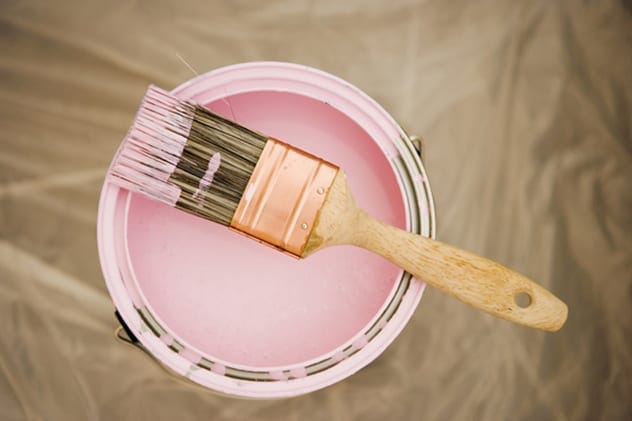
Unleash your inner artist with spices! You can make your own paint in a couple of fun ways. The simplest method involves mixing a tablespoon of a brightly colored spice, like turmeric or paprika, with a little water to form a paste. The spice won’t completely dissolve, but the water will take on its vibrant color, perfect for painting Easter eggs or creating soft, watercolor-style artwork. This technique echoes how early humans created cave paintings and decorated pottery using natural pigments from spices, berries, and minerals.
For a more durable paint, try mixing your chosen spice with white tempera paint. This is a fantastic activity for kids, teaching them about color theory and the distinct smells of different spices. Paprika creates a wonderful reddish hue, turmeric a brilliant yellow, and cinnamon a lovely earthy brown. It’s a delightful sensory experience for all ages and a budget-friendly way to get creative!
8. Garden Guardians: Spices to Deter Pests
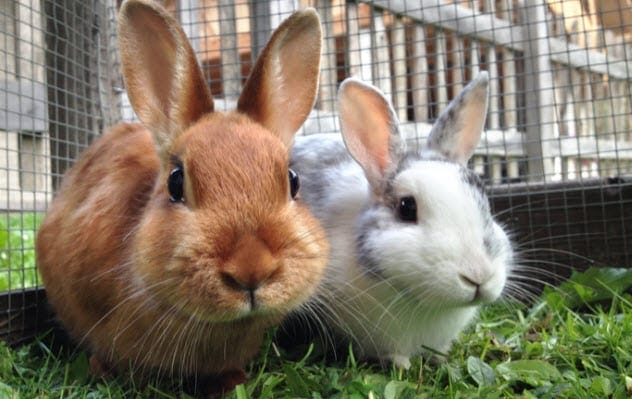
While wild animals like bunnies can be adorable, they can quickly become a gardener’s frustration when they start feasting on your lovingly grown vegetables. If you want to protect your harvest without harming these creatures, certain spices can be your allies. Sprinkling strong spices such as cayenne pepper, chili powder, or red pepper flakes around your vegetable patch can effectively deter them.
This natural approach not only keeps unwanted critters away but can also enrich your soil and offer some protection against bacteria. Just remember to reapply the spices after watering your garden or after a heavy rain, as they can get washed away.
9. Boost Your Well-being: Health Benefits of Spices

While spices aren’t a substitute for prescribed medicine, incorporating them into your diet can offer some impressive health advantages. Numerous studies have explored the benefits of various spices. For instance, cinnamon has demonstrated potential in helping to lower blood sugar levels for individuals with type 2 diabetes and may also help reduce high cholesterol and triglyceride levels.
Turmeric, with its active compound curcumin, is widely recognized for its anti-inflammatory properties. Research suggests curcumin might reduce brain inflammation and has shown promise in improving memory in adults over 50. It may also alleviate pain and swelling for those with arthritis. Ginger is another fantastic spice, excellent for combating nausea and upset stomachs. It has been traditionally used to prevent motion sickness and to ease nausea induced by chemotherapy. So, if you’re prone to travel sickness, a little ginger tea or a ginger candy could be a helpful travel companion!
10. Natural Pest Control: Spices as Insect Repellents

Dealing with unwanted household pests? Your spice cabinet might offer a natural line of defense. Ants, for example, strongly dislike cinnamon. If you have an ant invasion, simply sprinkle cinnamon powder near their entry points or along their trails, and they’ll likely steer clear. For a more targeted approach, mix cinnamon oil with water and spray it directly where you see ants.
Cinnamon’s repellent qualities don’t stop there; bed bugs are also said to dislike it. While it won’t eradicate an infestation (you’ll need professional help for that), spraying a diluted cinnamon oil solution on bedsheets a few hours before sleep might reduce their activity. In fact, many small critters, including spiders, mosquitoes, fruit flies, wasps, and even mice, are not fans of cinnamon, making it a versatile, natural repellent to have around the house.
It’s pretty clear why spices were basically ancient gold, isn’t it? From preserving the past to protecting our gardens, their roles have been far more varied and vital than just making our food taste amazing. These everyday items in our spice racks hold centuries of history and ingenuity. Knowing how versatile they are, easily found and usually affordable, makes you wonder what our ancestors would think of our spice-laden grocery store aisles! It’s a fun reminder that simple, natural ingredients often pack the most surprising punch, offering us healthier, craftier, and more fragrant ways to navigate daily life. Who knows, maybe you’ll be inspired to find your own bizarre new use for the spices hiding in your cabinet!
What other unusual spice uses do you know? Share your own spicy secrets in the comments below!


